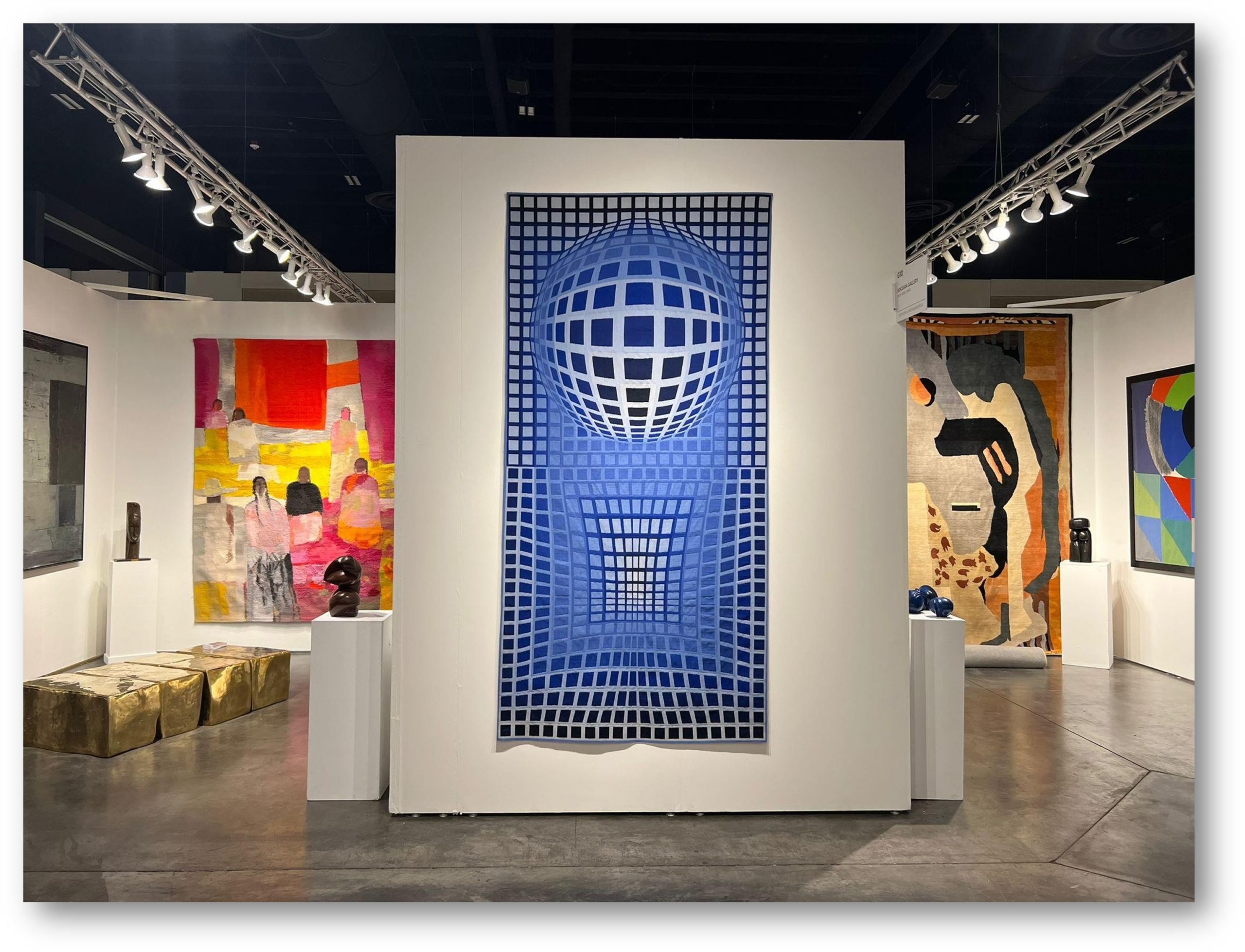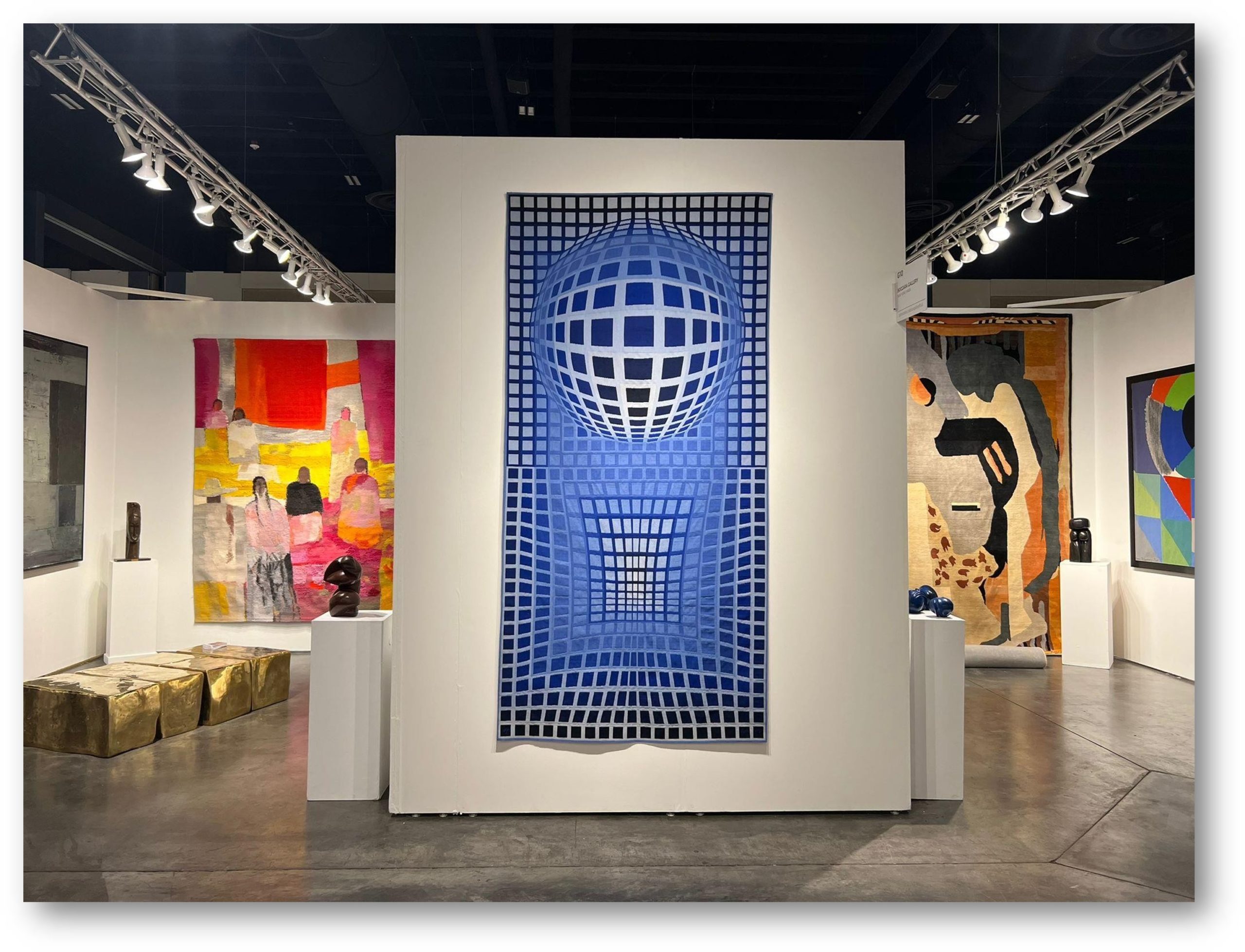
Modern Tapestry by Victor Vasarely
“VP KEK”
1971
292 x 145 cm- 114 x 57 in
Atelier Pinton, Aubusson (France)
ABOUT THE TAPESTRY
VP KEK is one of Vasarely’s most famous tapestries. Created in 1971, it
measures over 9 feet tall and 16 feet wide, and features a bold, geometric
pattern of squares and circles in shades of blue and green. The title “VP KEK”
is a reference to the Hungarian words for “blue” and “green,” and reflects
Vasarely’s Hungarian heritage.
What makes “VP KEK” so striking is its use of optical illusion. From a
distance, the squares and circles appear to be three-dimensional, with some
seeming to pop out of the tapestry and others receding into the background.
This creates a sense of movement and depth that draws the viewer in and
invites them to explore the piece up close.
But as you approach the tapestry, the illusion breaks down, and you can see
that the shapes are actually flat and two-dimensional. This play between
illusion and reality is a hallmark of Vasarely’s work and is what makes his art
so fascinating to look at.
In addition to “VP KEK,” Vasarely created many other tapestries during his
career, all of which showcase his mastery of geometric abstraction and
optical illusion. Today, his tapestries can be found in museums and public
spaces around the world and continue to captivate audiences with their
mesmerizing patterns and optical effects.
In conclusion, Victor Vasarely was a pioneering artist who helped define the
Op Art movement, and his tapestries are a testament to his skill and
creativity. “VP KEK” is a particularly striking example of his work,
showcasing his use of optical illusion to create a sense of movement and
depth. Whether viewed up close or from afar, it is a piece that continues to
captivate and inspire viewers today.
